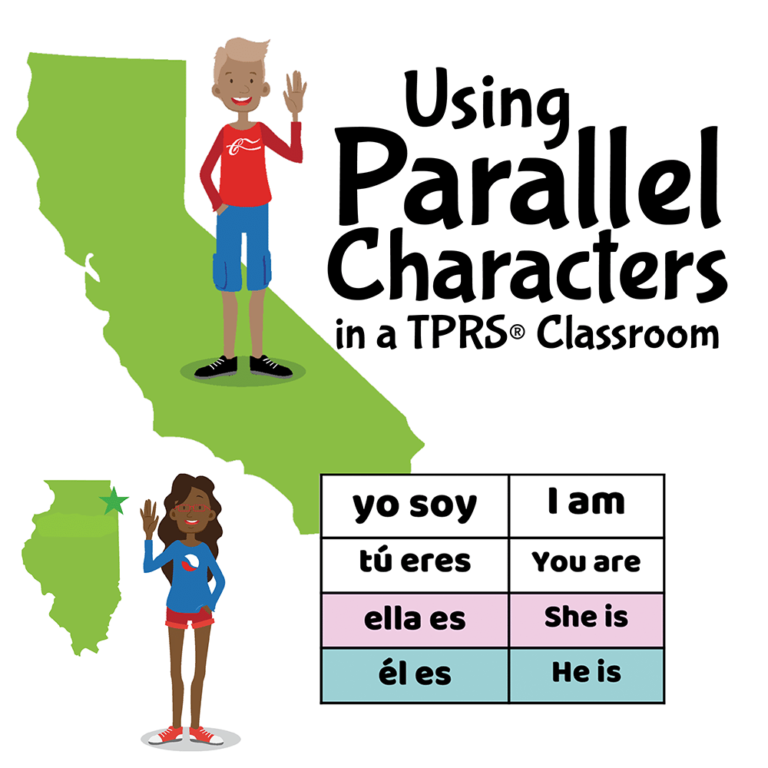
You might have come across the term parallel character if you’ve been around TPRS® or CI circles. But what exactly are parallel characters and how can you easily add them to your class routine for providing more input for your students?
In the Look, I Can Talk Teacher’s Guide (2018), a parallel character is defined in the first lesson on page 9.
Now introduce another character, called a parallel character... The new character will be a student from class or a student playing the role of a celebrity, fictional character or an animal.
So, a parallel character is a new character. It’s not a current character in the discussion, but rather a new character. If you are talking about a character in a story, novel or a student, then a parallel character would be an additional character that you add.
There are two types of parallel characters. They are either personal parallel characters (student plays the role of herself) or creative parallel characters (student plays the role of someone or something else). This character is either determined by picking a student from class or having the student play the role of someone else (celebrity, fictional character, animal, inside joke character in class, etc). Some examples of possible characters, in addition to your students, would be Abraham Lincoln, Martin Luther King Jr., Black Widow, Princess Leia, Mickey Mouse, Garfield, Spongebob, and Harry Potter.
Another important parallel character to use is the teacher. This will help model the 1st and second person forms in context for students during the discussion for others to be able to use.
So what exactly is the reason to use parallel characters?
In short, parallel characters are used to:
Multiple characters are an integral part of background information. They allow the teacher to focus on comprehension without necessarily having to add additional storyline and they allow the class to develop memorable characters through details. By comparing and contrasting characters, the students will get repetitive exposure to new language. This exposure will yield faster processing over time and eventually fluency. The ultimate goal is to have students who can speak with confidence, which means without hesitancy and with accuracy. This will happen over time as long as the students understand at a high level.
For example, if the teacher were presenting information in the first few slides of the first lesson of the Look, I Can Talk curriculum in Spanish, they would be working with: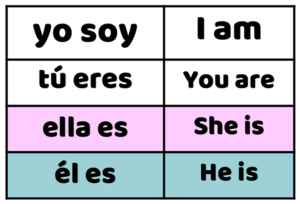
So, the teacher would first talk about the main character in the story with circling and triangling questions. Those sentences might be as simple as:
Then, the teacher would add parallel characters slowly with new information so that the class could get more practice with the words soy, eres, es in different contexts. This also gives the student actors the chance to say them correctly.
With that sentence, the teacher could introduce additional characters.
But it might be helpful to talk about how to add those parallel characters into the story!
Adding parallel characters is easy! We can add them by either:
So in the previous example, we have a student pretending to be George with the sentences:
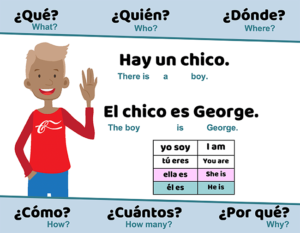
To add in any of the following, in the Target Language:
And the teacher can then talk with the TPRS® skills of circling and triangling and slowly add in additional parallel characters. Some examples might be:
One additional way to add them in is to say the wrong thing to prep the class for a parallel character. Examples:
So now that you have your parallel characters, what do you do with them? 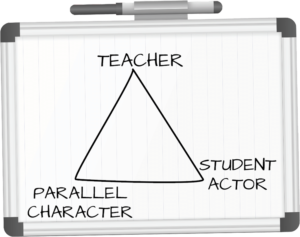
Well, you continue to flesh out their back story and background information like you do the main character. When you add a new detail about the main character, circle and triangle that information mixed with the old information and then add a similar or different detail to the main character.
For more information on Triangling, the triangle is a reminder to talk to your student actor, to add a parallel character and to add yourself as a character for comparing and contrasting purposes. This is done as a tool to stay on a guide word for more interesting and repetitive discussion, while using multiple instances of the first, second, and third person forms of a verb in context.
For example, the next sentence on the following slide about George is:
So, after you have exhausted circling and triangling that sentence and the previous ones and any previous information, you can introduce this information with the parallel characters in the following ways, in the Target Language:
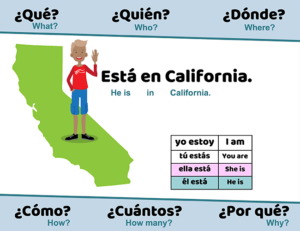
And you can continue to circle and triangle and add in additional characters and information when you feel students are ready for it by answering confidently and with no hesitation. Some examples might be:
Unfortunately, this is subjective. Some might work in one class one day and not work in the same class a different day or they might work in one class but not in another section of the class. It’s really up to the students.
But if you are asking open-ended questions for the class to provide answers that are interesting to them, that will help make the parallel characters more successful than a prefabricated story.
Hopefully now, you can see the genius of using Parallel Characters for improved input! So, go ye forth and multiply the characters in your stories, novel discussions, and other lessons!
*For more practice on Parallel Characters, sign up for our TPRS 101 workshop if you haven't ever been or in awhile!*